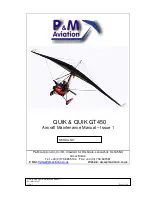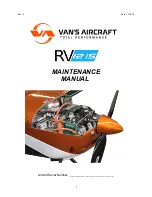
Page 2-30
Pilot’s Operating Manual
Revision A2: Nov, 2004
Sub-section 2
ABNORMAL HANDLING
Hawker 800XP Pro Line 21
Section V - FLIGHT HANDLING
LANDING BY USE OF TRIM SYSTEM
Should failure of any one of the primary flying controls occur, the following landing technique is
recommended.
Maneuvering in the traffic pattern should be made at approximately 160 KIAS with flaps 15° and the
landing gear down. Steep turns should be avoided. A long final approach should be made with flaps 45°
at V
REF
+ 10 KIAS.
If the rudder control has failed, the yaw damper must be switched off before touchdown.
If the elevator primary control has failed, airspeed may be controlled by the elevator trim and the rate of
descent by the thrust levers. The final stage of the approach should be fairly flat and touchdown made
by slowly closing the thrust levers. It has been demonstrated that elevator trim remains effective during
the landing flare.
If both primary rudder and elevator controls are lost together with a single engine failure, make the
approach at V
REF
+ 20 KIAS, flaps 25° and landing gear down. This airspeed should be maintained to
the threshold and a landing made with flaps 25°.
NOTE: While it is normal to select flaps 45° on a single engine landing, it is considered unwise to
create a trim change at a late stage of the approach when direct elevator control has been
lost.
If the aileron control has failed, it is recommended that the rudder be used for lateral control. However,
it may be possible to use the aileron trim control depending on the type of failure. Unless the left aileron
itself has jammed, normal use of the trimmer will give some lateral control, the amount depending on
how much of the circuit is free to stretch. Should lateral control be seriously impaired, it is recommended
that a landing be made with flaps 0°. The final approach speed should not be less than V
REF
+ 25 KIAS;
a greater speed may be needed to retain sufficient lateral control.
LANDING USING EMERGENCY BRAKING
If a main braking system failure is suspected but not confirmed before landing, the emergency system
should not be selected prior to touchdown. The normal brake system should be used and the
emergency system only selected if complete failure of the normal system is confirmed after touchdown.
NOTE: If committed to using the emergency system, it should be selected with the pedals released.
With emergency selected, anti-skid will not be available so only minimum braking should be applied and
maintained until the airplane slows to taxiing speed. The pedals should not be pumped because rapid
exhaustion of the emergency accumulator will occur.
AFTER EMERGENCY LANDING
The copilot or cabin attendant should open the main entry door or emergency escape hatch, as
appropriate, and assist the passengers in leaving the airplane. The pilot should make sure the
emergency services have been alerted and shut down the airplane before leaving.
LANDING AFTER GEAR FAILS TO FULLY LOCK DOWN
Refer to the Airplane Flight Manual, Section 3 - EMERGENCY PROCEDURES
Содержание Hawker 800XP
Страница 18: ...Page 16 of 16 P N 140 590032 0007 Revision A5 Feb 2012 Pilot s Operating Manual Intentionally left blank...
Страница 20: ...Page 2 of 2 Pilot s Operating Manual P N 140 590032 0007LOTC September 22 2010 Intentionally left blank...
Страница 22: ...Page 2 of 2 P N 140 590032 0007A5 Log Of Revisions Intentionally left blank...















































